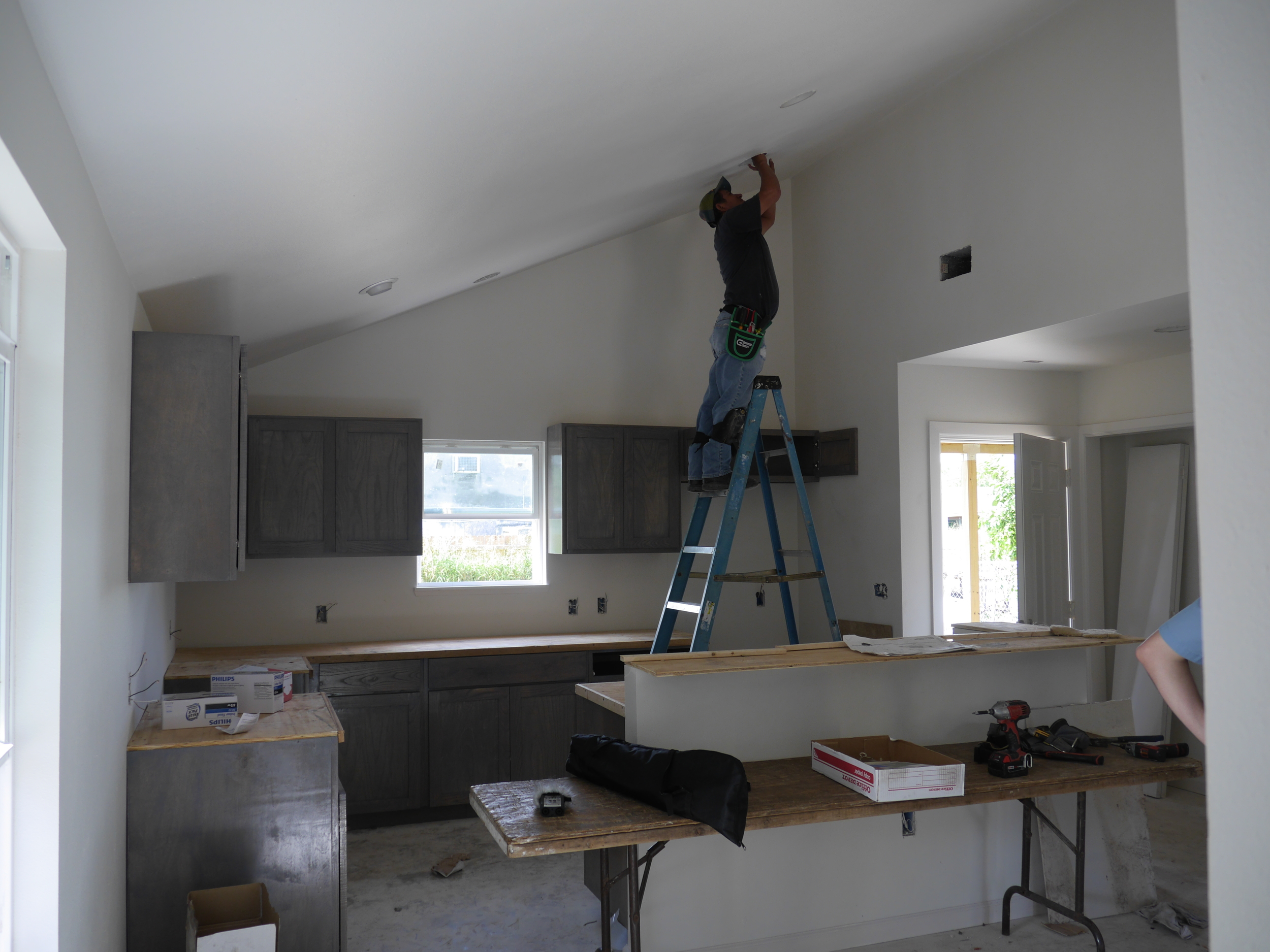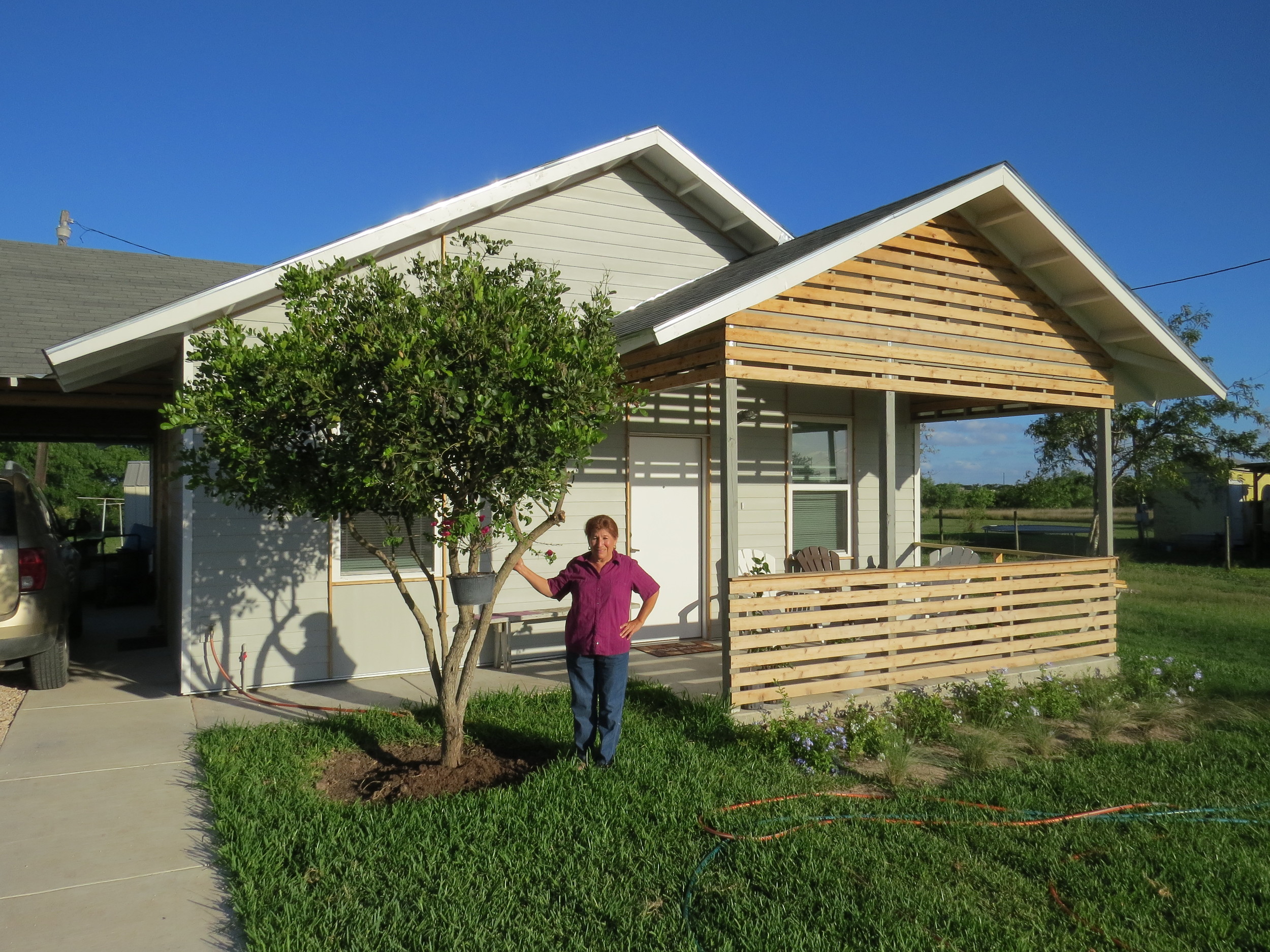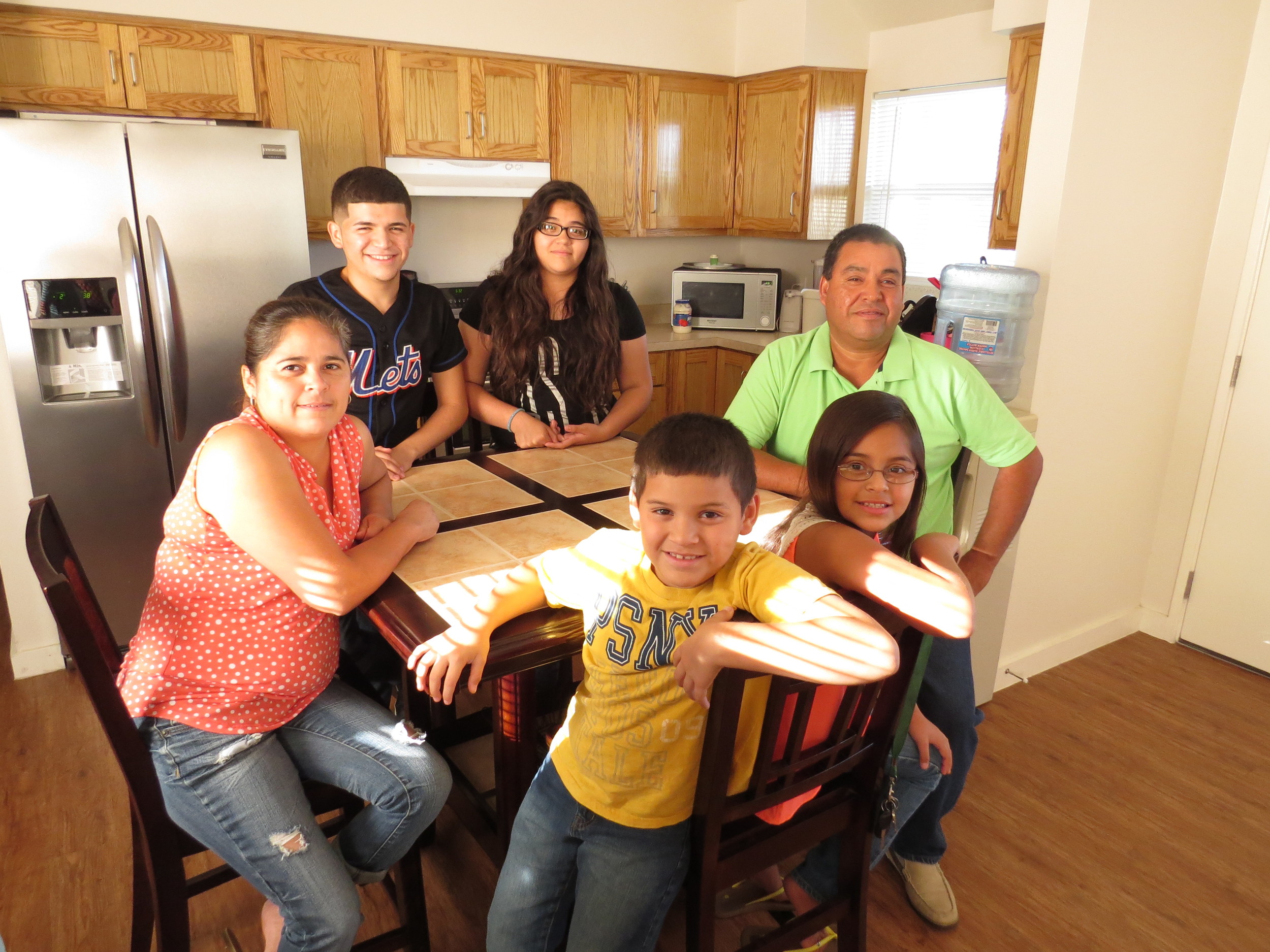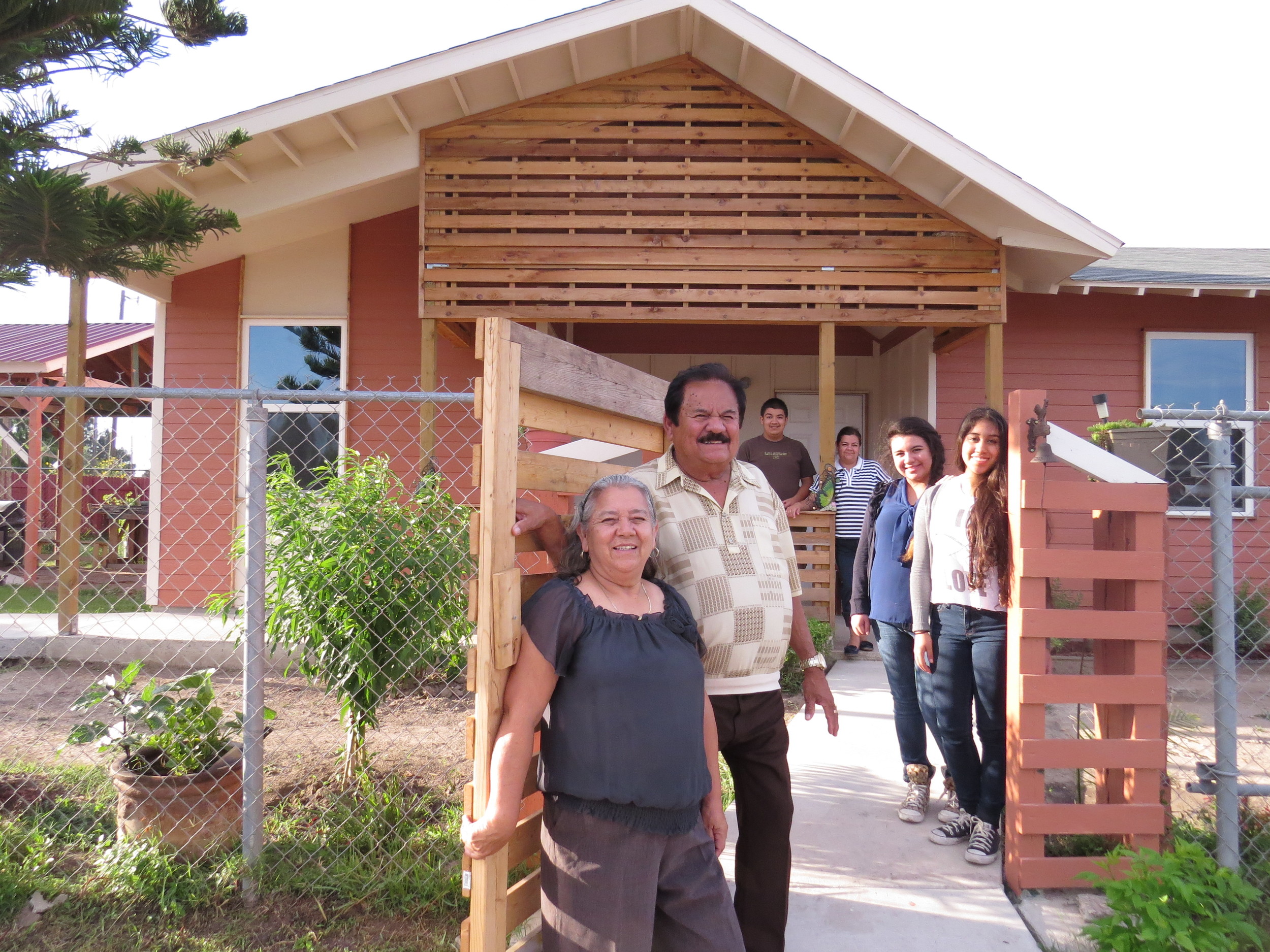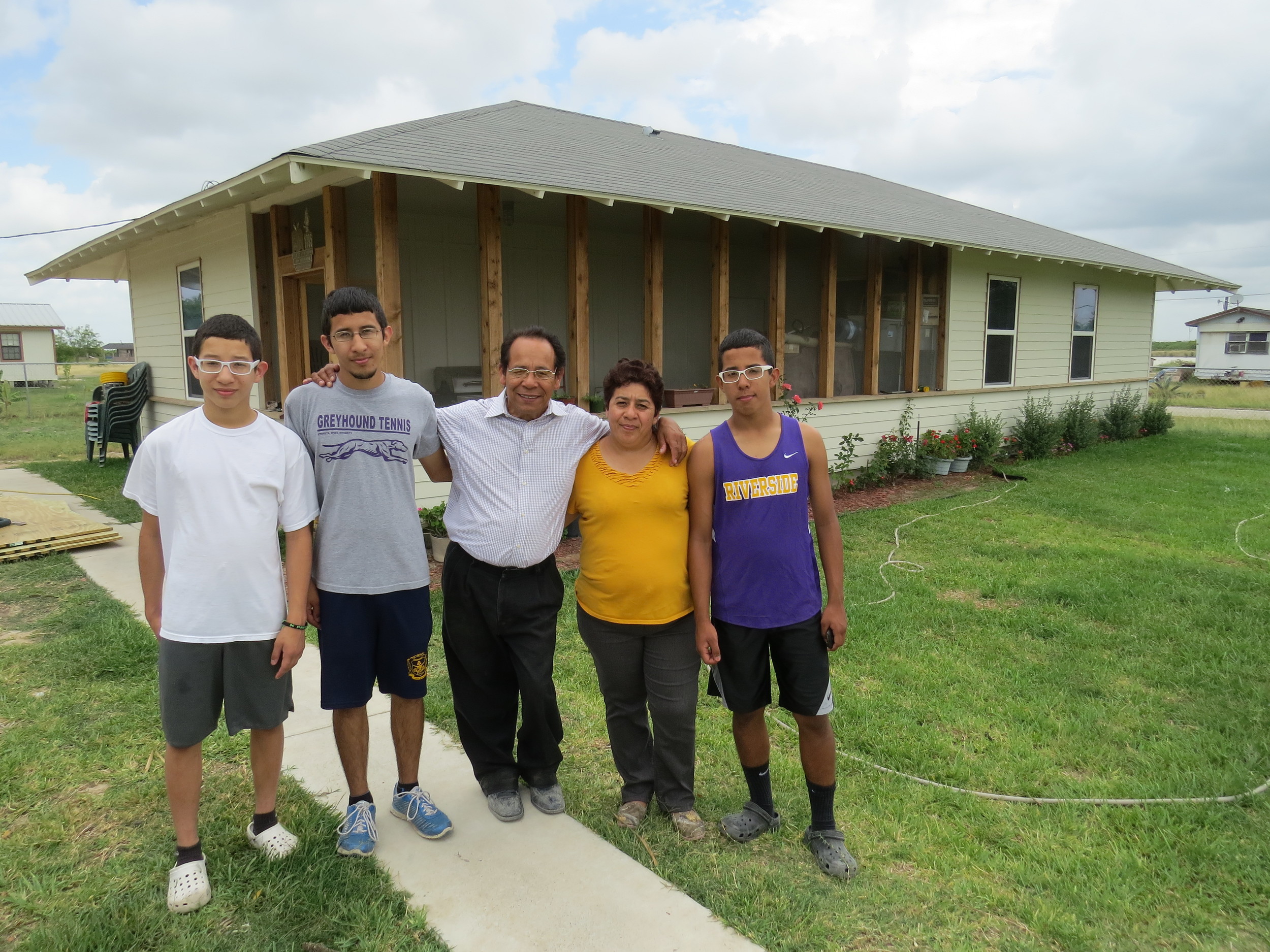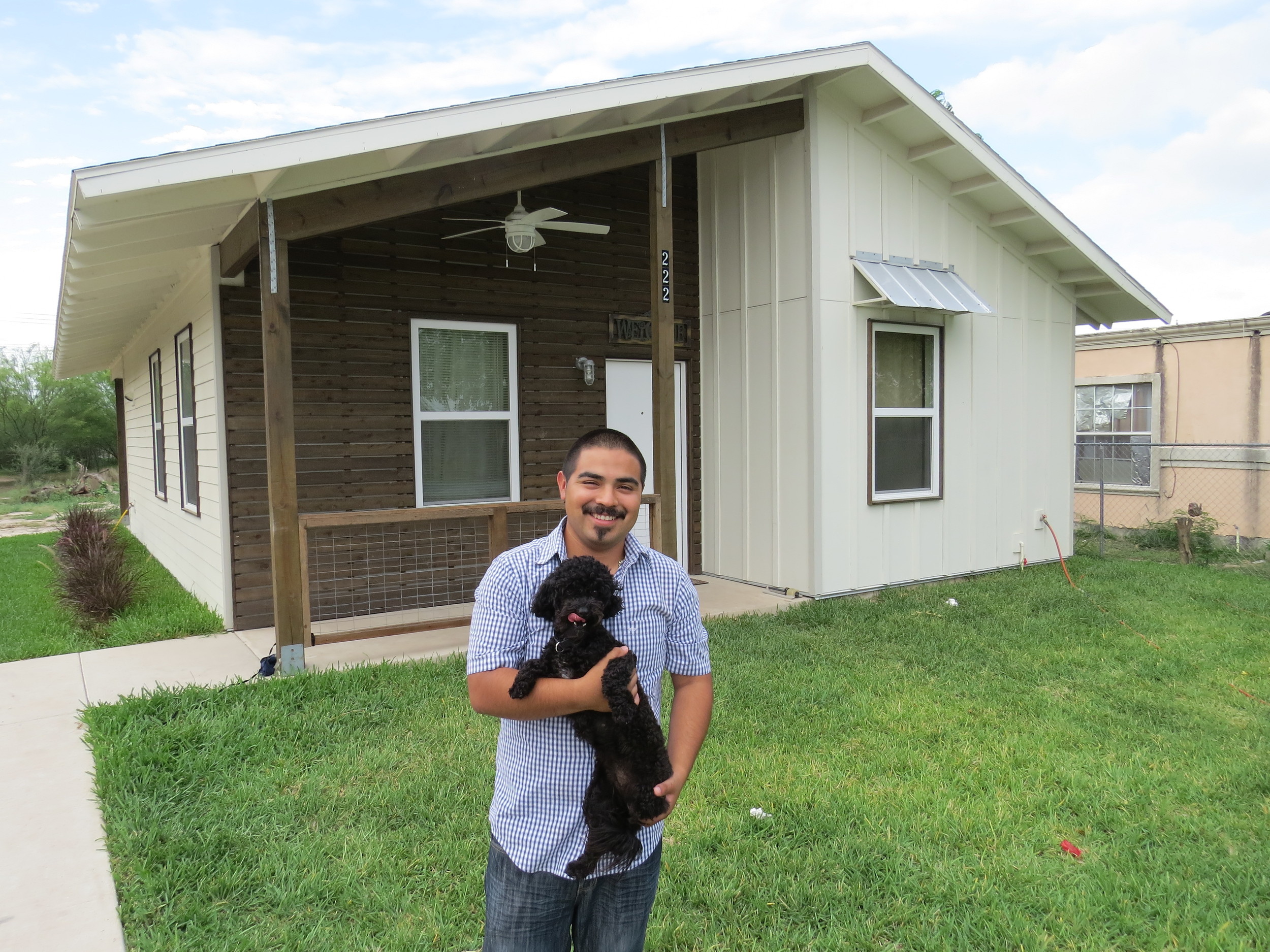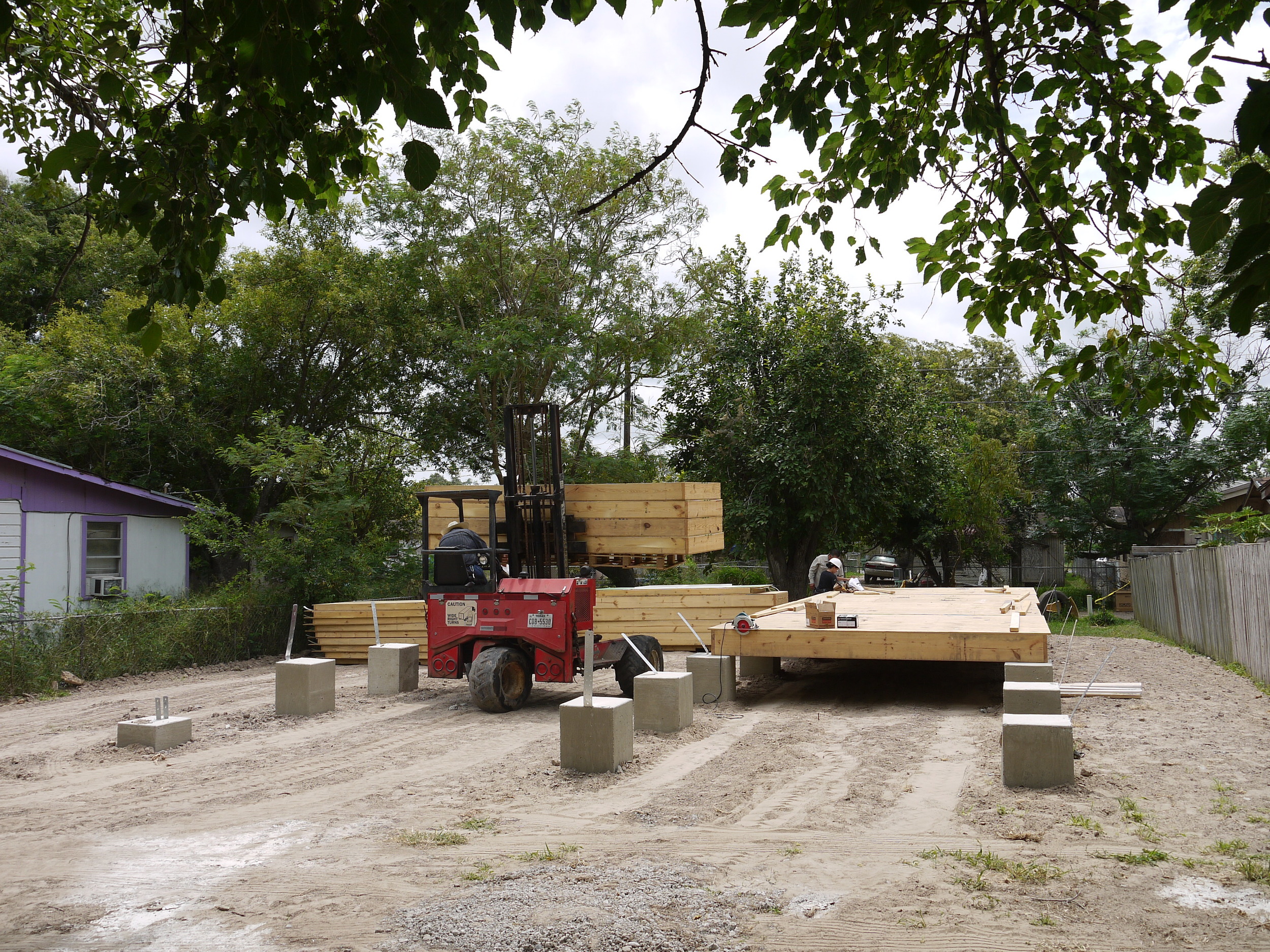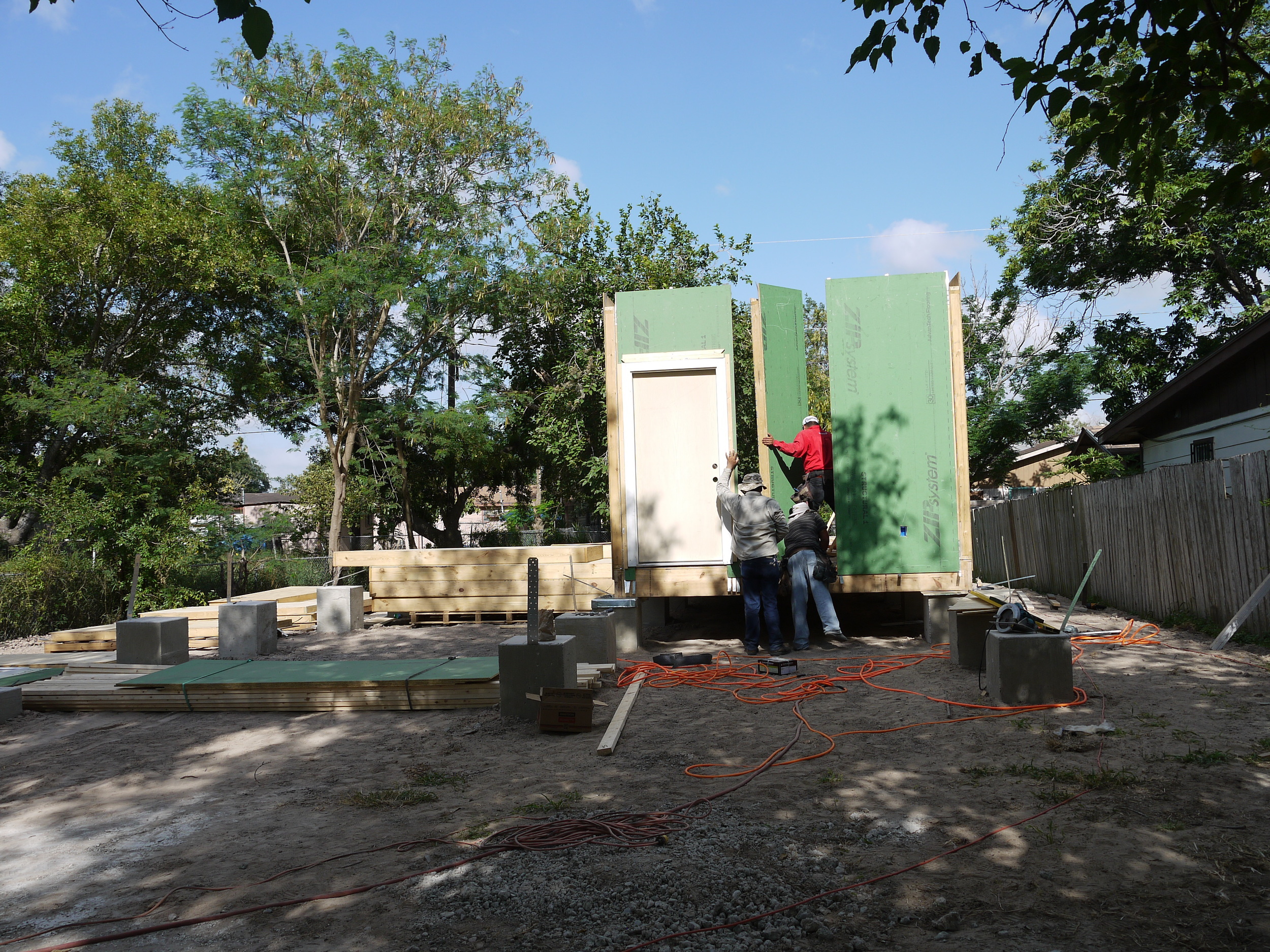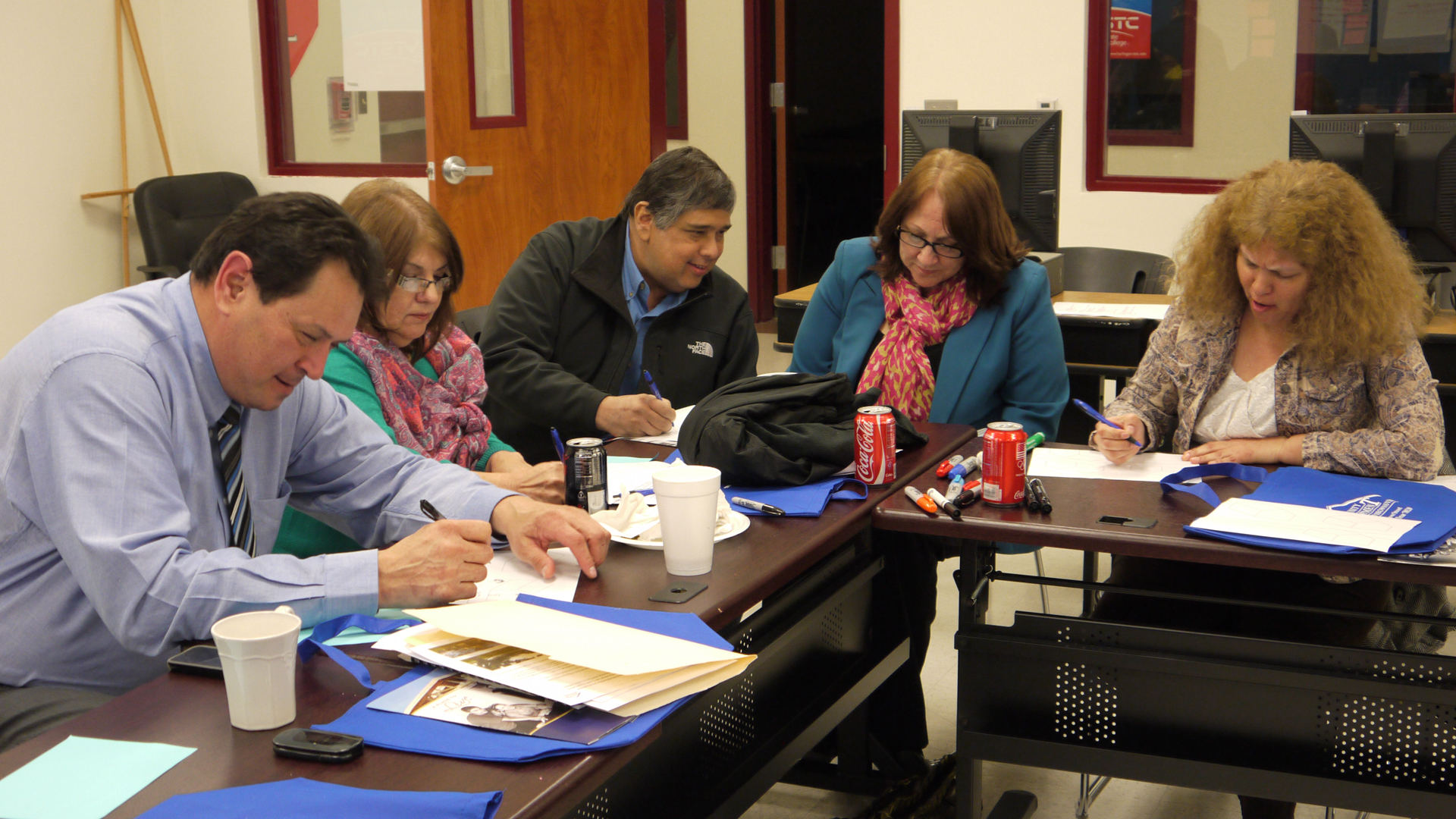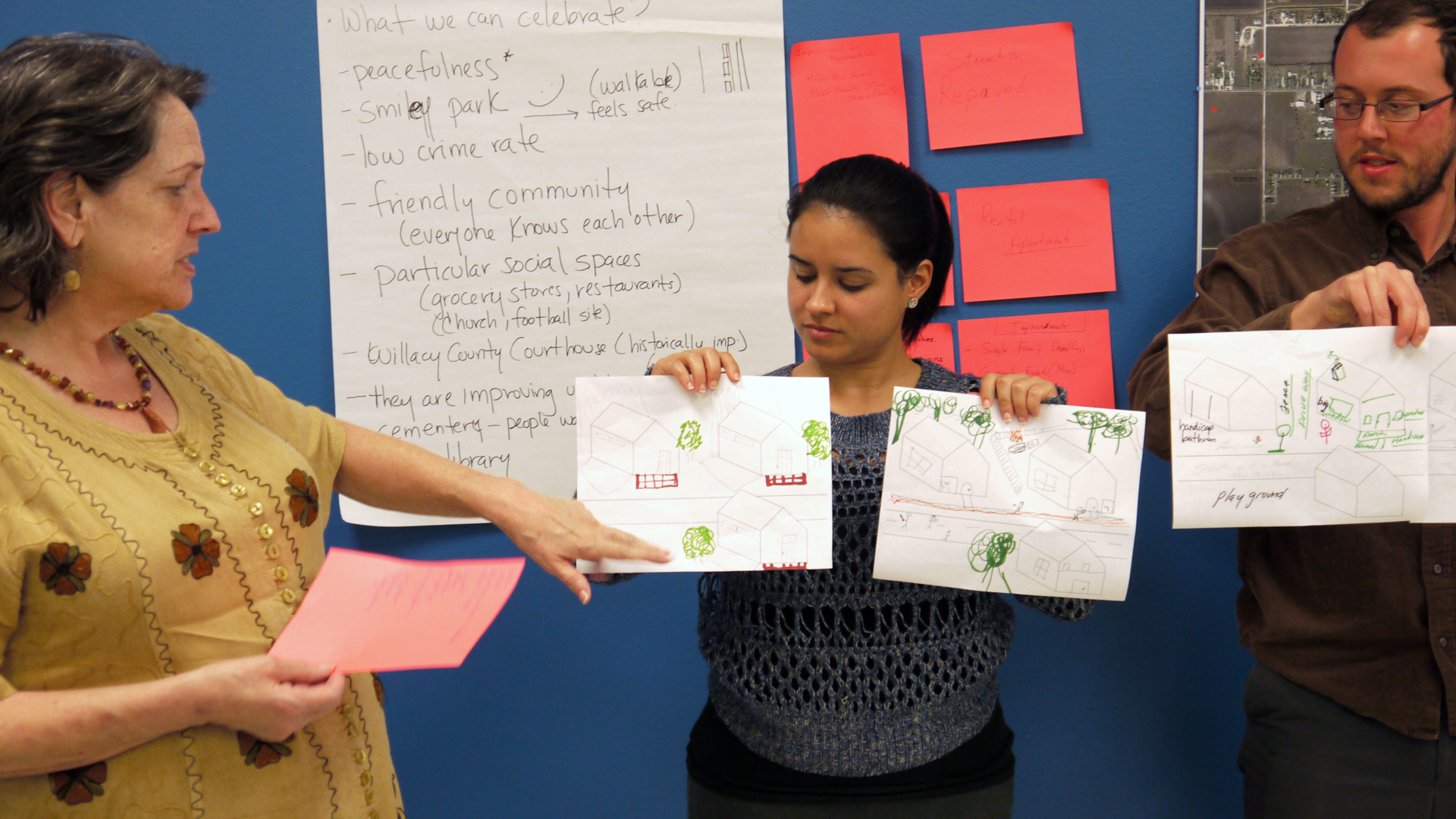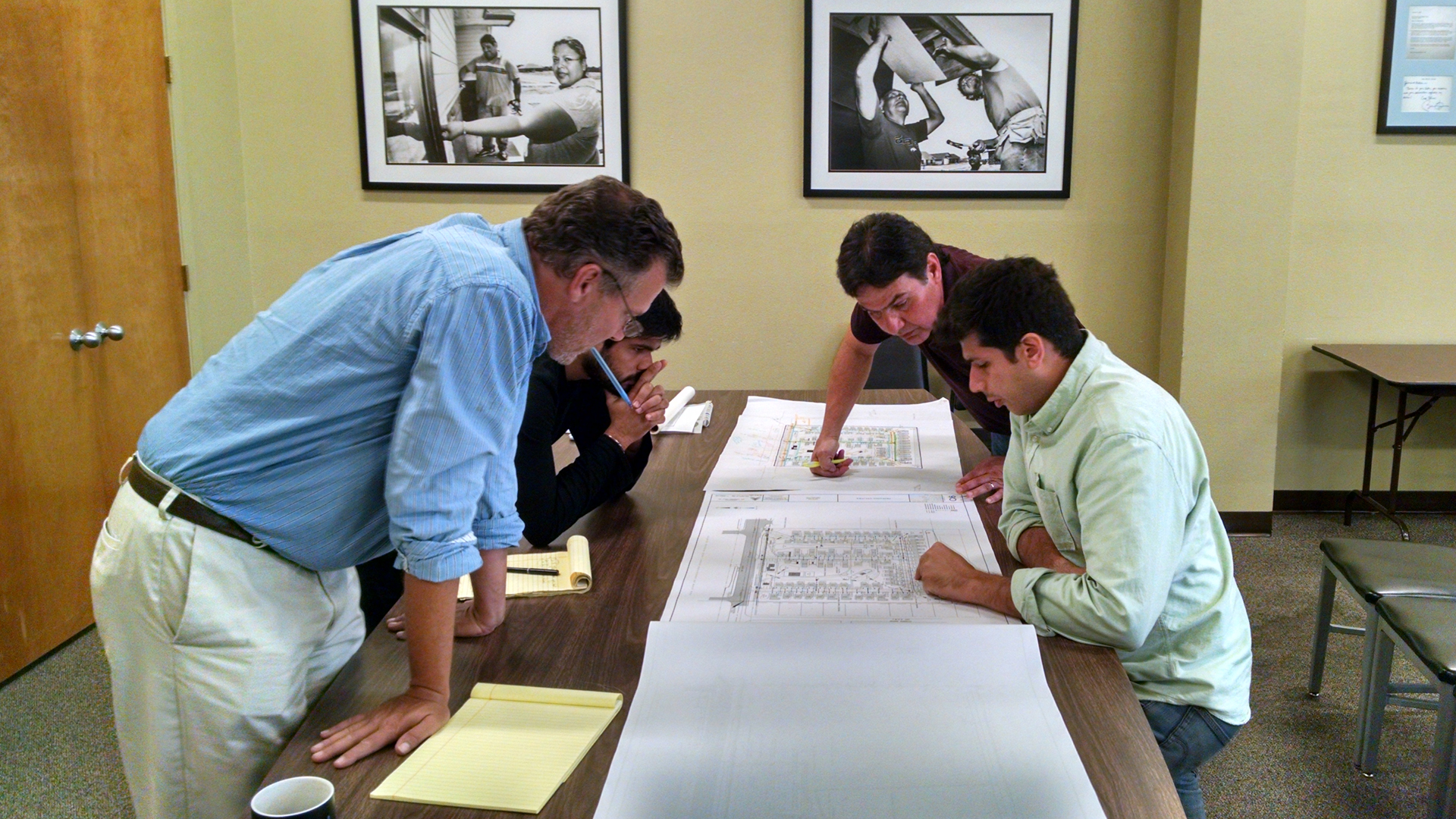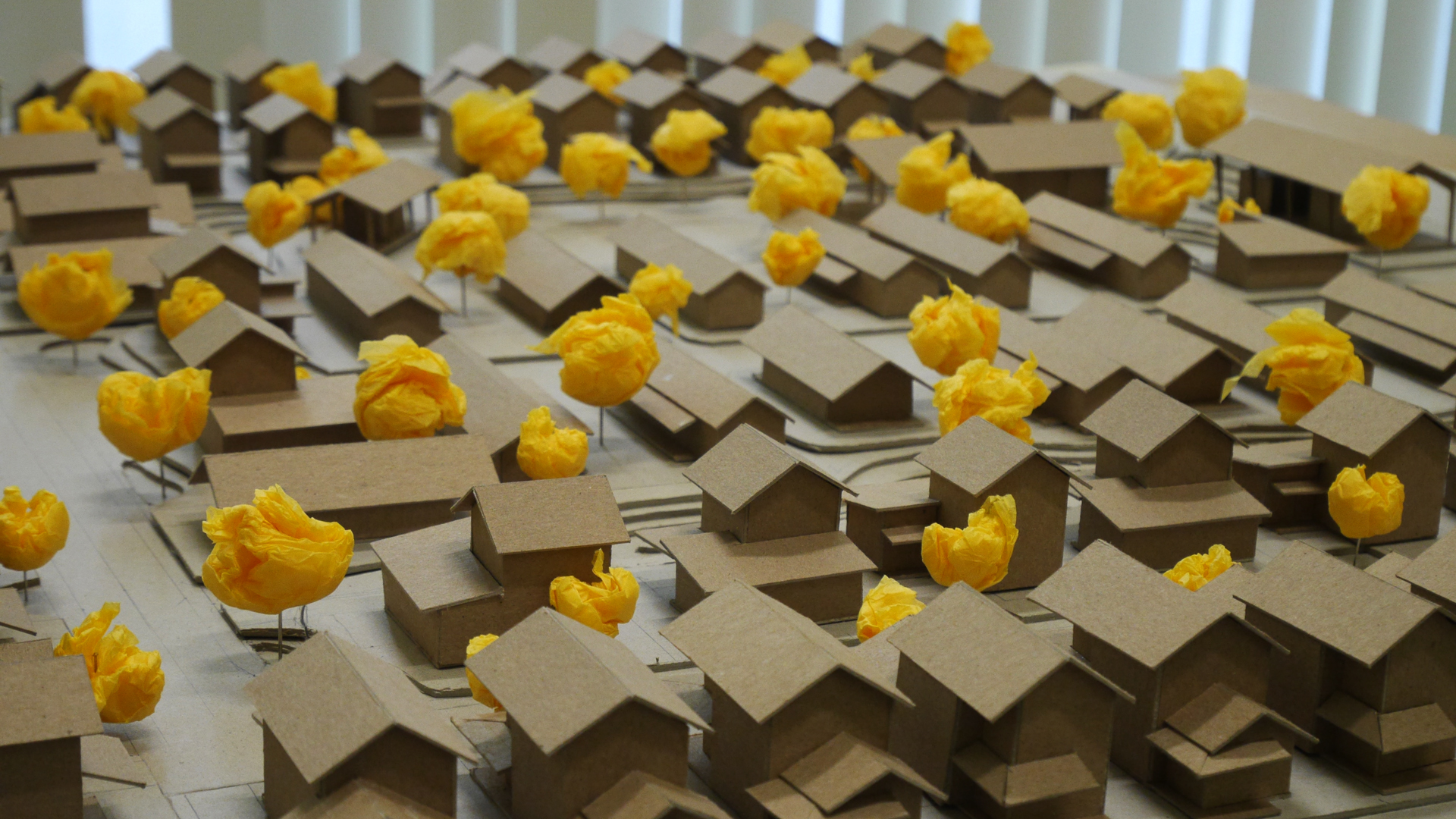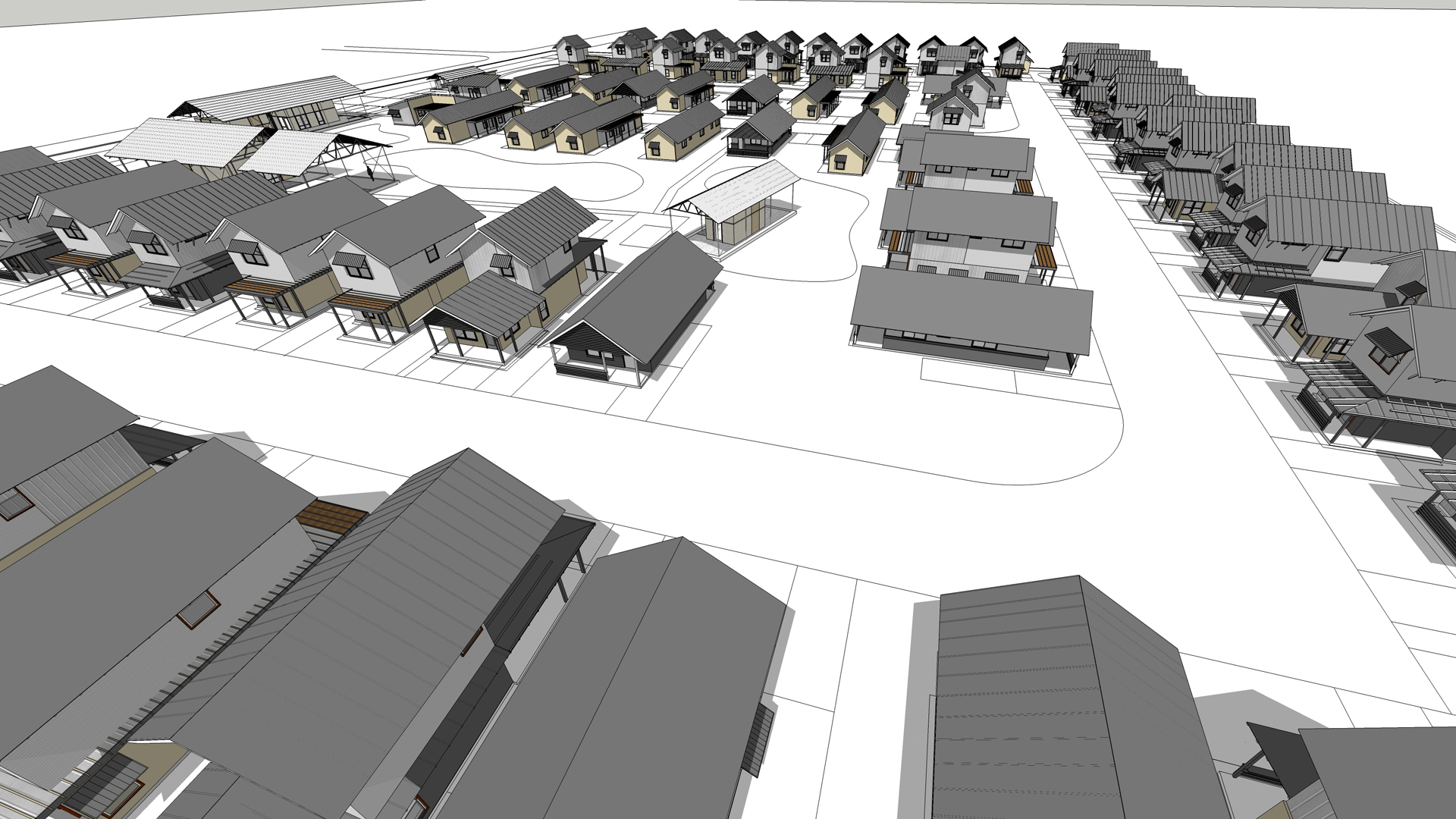Learn more about our Making work!
Casitas Los Olmos, completed in October 2017, is a neighborhood of 80 single family rental units and six community amenity structures where families can thrive and have a sense of ownership of where they live. Porches create spaces to enjoy the outdoors, shaded windows help keep the hot sun out, and energy and water efficient construction help keep utility bills low. Each home has parking spaces immediately adjacent to the front door.
The 8.72 acre site incorporates low impact development (LID) strategies such as bioswales, partially permeable driveways, and native landscaping to filter and absorb as much stormwater on site as possible. Community amenity structures (including leasing offices, a learning center, a community space with a prep kitchen, a BBQ pavilion, mail kiosk, laundry and playground) define the larger public green areas. Steel roofs encompass the amenity structures and provide large shaded areas for comfortable gathering and play areas. The shade structures take a cue from Raymondville’s agricultural history.
From the project's inception, the design team challenged itself to create a place that engages residents and engenders a sense of community. The neighborhood was developed via a community engaged design process, resulting in a collection of sequential green spaces, varying in scale from pocket neighborhood areas to community greens. The integration of pedestrian paths allow residents to move throughout these spaces of gathering and play.
![[bc]](http://images.squarespace-cdn.com/content/v1/5248ebd5e4b0240948a6ceff/1412268209242-TTW0GOFNZPDW9PV7QFXD/bcW_square+big.jpg?format=1000w)













